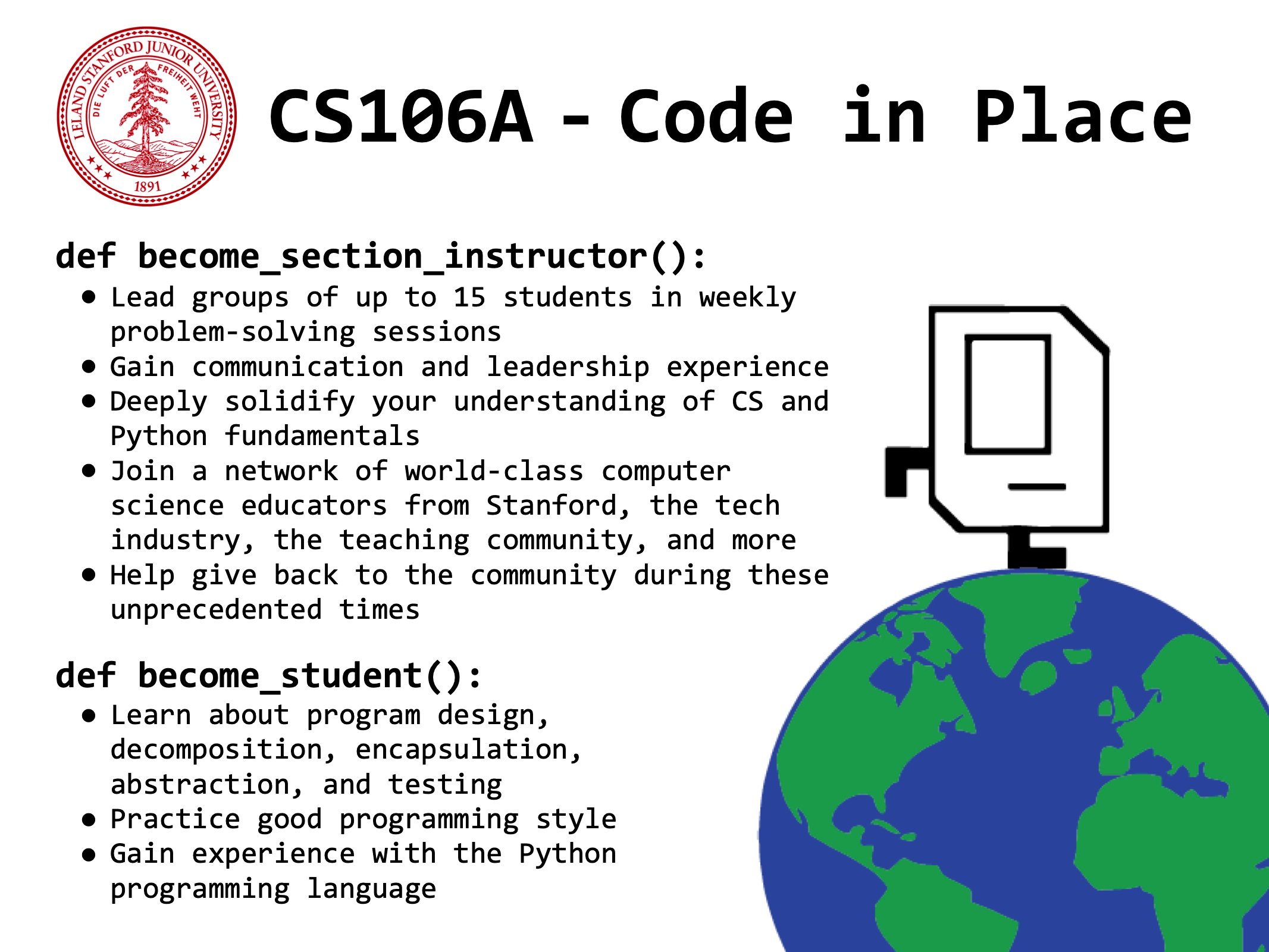5 Takeaways from being a Section Leader for Stanford's CS106A
Creating code + community amid a pandemic

Context
In Spring 2020, I volunteered as a section instructor for an experimental computer science course offered by Stanford.
The course was modeled based on Stanford’s popular introductory programming course, CS106A-Programming Methodology, but condensed down to five weeks.
Curriculum was taught in Python and included control flow, decomposition, variables, expressions, and iterators.
A key differentiator for this course was the implementation of an online “section”. This was a weekly 40 minute gathering of 8-12 students with a section instructor to reinforce concepts in a communal interactive way.
Below are my main takeaways fresh from the course recently completing.
Completion Rate
There was a 50% completion rate based on the stats I came across on the forum.
Compared to a 10-15% industry average, this was pretty good!
Of course, this can’t be taken at face value since it’s not an apples to apples comparison…but I would love to see more research and experimentation in this subject area.
Accountability
Section was able to provide consistent (weekly) accountability for those that opted-in.
I saw a lot of smiles from students on Zoom when I mentioned that section would be “code AND community”.
Momentum
Sections went better when I focused on “building momentum” vs packing in as much information as possible in 40 minutes.
The key was reinforcing what students had already learned during the week and not overwhelm them with information overload.
Peer Learning
Peer learning within the section wasn’t that engaging, which I attribute to the code of conduct preventing students from sharing code.
I was moved by the helpful support that students and section leaders provided each other in the forum. Code couldn’t be shared, but I was impressed by students providing thoughtful hints on how to to go about solving the problems.
Humor Works.
I used the meme below after the first assignment.

The little bit of humor resonated with the students. They referred to it throughout the section to articulate their experiences working on (and solving!) that week’s assignment.
Memes are a great way for students to take on the identity of being a programmer.
Next Steps
Many students mentioned in the last section that they were signing up for new courses to continue their coding journey!
I felt fortunate in contributing to an effort making programming more inclusive to a broader populace.
Coding in popular culture is often portrayed as an individual pursuit, so I’m hopeful that experiments like this one can nudge us as a community to provide more collaborative learning environments for students moving forward.
